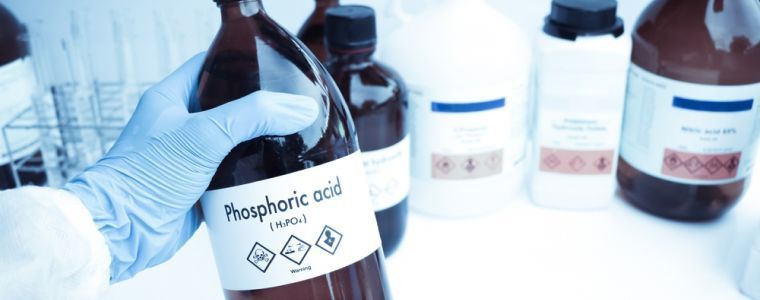Oleum Safety Essentials: Protecting Workers and Ecosystems
Oleum, a potent sulfuric acid derivative, is widely used in the chemical industry for its powerful reactivity. However, its handling demands rigorous safety protocols due to its highly corrosive nature and environmental risks. In this post, we’ll explore essential safety precautions for managing oleum effectively in industrial settings, along with strategies for reducing its environmental impact. Whether you’re involved in chemical production or just curious about sustainable practices in handling reactive substances, this guide will provide insights into protecting both people and the planet.
Handling and Safety Precautions for Oleum
Proper Storage Conditions
Safe storage of oleum requires specialized, corrosion-resistant containers, typically made from stainless steel or acid-resistant materials, to prevent leaks or reactions. Temperature control is crucial, as the oleum should be kept in cool, stable conditions to avoid thermal decomposition and pressure buildup. Storage areas must be well-ventilated to disperse any sulfur trioxide (SO₃) fumes that may escape, reducing the risk of inhalation hazards and potential corrosive damage to nearby structures. Additionally, storage facilities should include acid-proof flooring, spill containment systems, and emergency neutralization agents to swiftly address accidental leaks, ensuring a secure and controlled environment.
Protective Gear and Safety Equipment
When handling oleum, comprehensive personal protective equipment (PPE) is essential due to its highly corrosive nature and fuming properties. Workers must wear acid-resistant gloves to prevent skin contact and minimize chemical burns. Safety goggles are crucial to protect eyes from splashes and fumes, while full face shields provide added protection to the face and neck. Chemical-resistant aprons, coveralls, and boots safeguard against accidental spills, ensuring minimal skin exposure. Respiratory protection, such as fume masks or respirators, may also be required in poorly ventilated areas to prevent inhalation of harmful sulfur trioxide (SO₃) fumes, completing a safe PPE setup.
Emergency Procedures
In the event of an accidental spillage or exposure to oleum, immediate action is crucial. First, evacuate the area to ensure safety and prevent inhalation of fumes. Notify emergency response teams while avoiding direct contact with the spill. For surface spills, use appropriate neutralizing agents like sodium bicarbonate or calcium carbonate, which can safely neutralize the acid. Carefully apply the neutralizer, starting from the outer edges of the spill and moving inward. If skin or eye exposure occurs, rinse the affected area with copious amounts of water for at least 15 minutes and seek medical attention immediately. Always refer to the
Material Safety Data Sheet (MSDS) for specific protocols.
Environmental Impact of Oleum
Air Pollution and Emissions
The production and use of oleum can lead to the release of sulfur dioxide (SO₂) into the atmosphere, particularly during handling and processing. Sulfur dioxide is a significant air pollutant, contributing to acid rain formation, which can harm ecosystems, damage buildings, and affect human health. Prolonged exposure to SO₂ can cause respiratory issues and aggravate existing health conditions. Furthermore, its presence in the atmosphere can lead to the formation of particulate matter, further exacerbating air quality issues. Industries must implement strict emission controls and monitoring to mitigate these risks and comply with environmental regulations.
Water Pollution
If oleum inadvertently enters water bodies, the consequences can be severe. Its highly acidic nature can drastically lower the pH of water, resulting in toxic conditions for aquatic life. This acidification can harm fish, amphibians, and other organisms, disrupting entire ecosystems and leading to biodiversity loss. Additionally, oleum can contaminate drinking water sources, posing risks to human health. Therefore, immediate containment and remediation efforts are crucial in preventing oleum spills from reaching water bodies.
Disposal Regulations
Proper disposal of oleum and sulfuric acid waste is vital to safeguarding the environment and public health. Regulations typically require that these substances be treated as hazardous waste, necessitating specialized handling, transportation and disposal methods. Companies must adhere to guidelines set by local and international regulatory bodies, ensuring waste is neutralized or disposed of in licensed hazardous waste facilities. Regular training and compliance audits help maintain safety standards and reduce the risk of environmental contamination, underscoring the importance of responsible chemical management in industrial operations.
Common FAQs
How is oleum different from sulfuric acid?
Oleum differs from sulfuric acid in that it is a solution of sulfur trioxide (SO₃) in sulfuric acid (H₂SO₄), often referred to as "fuming sulfuric acid." Oleum has a higher acidity and reactivity due to the presence of SO₃, making it suitable for specific industrial applications.
What concentration is typically found in oleum?
Oleum typically contains varying concentrations of sulfur trioxide (SO₃), usually ranging from 10% to 65% by weight. The specific concentration used depends on its intended application, with higher concentrations yielding greater reactivity and acidity, making oleum suitable for processes that require strong acidic conditions.
Is oleum used in consumer products?
Oleum is generally not used directly in consumer products due to its highly corrosive and reactive nature. However, it plays an essential role in manufacturing various chemicals, such as dyes, detergents, and fertilizers, which may be present in consumer products, thus indirectly influencing their formulation and effectiveness.
What should be done in case of an oleum spill?
In the event of an oleum spill, evacuate the area immediately to ensure safety. Notify emergency response teams and avoid direct contact. Use neutralizing agents like sodium bicarbonate to contain the spill, and carefully apply them from the edges inward. Rinse any exposed skin or eyes with water and seek medical attention.
Conclusion
In summary, oleum is a vital chemical produced through the Contact Process, where sulfur dioxide is oxidized to sulfur trioxide and then dissolved in sulfuric acid. Its industrial applications span various sectors, including chemical manufacturing, petroleum refining, and metal processing, where it plays critical roles in producing dyes, explosives, and high-purity sulfuric acid.
However, due to its highly corrosive nature and potential environmental risks,strict safety measures are essential when handling oleum. This includes using appropriate personal protective equipment (PPE), ensuring proper storage and ventilation, and following emergency protocols for spills or exposure.
















